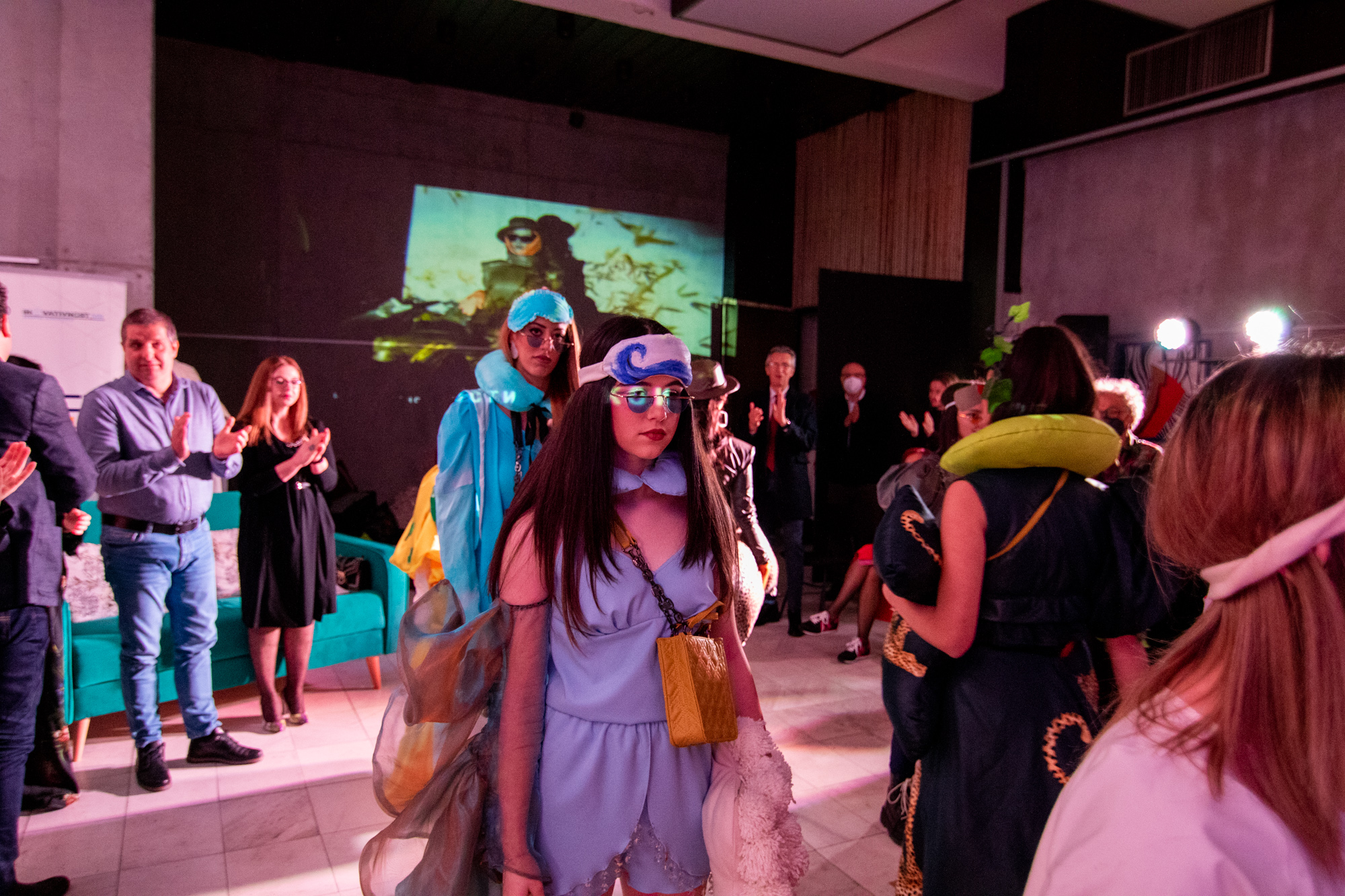
In the aftermath of the COVID-19 pandemic, the city of Štip — the heart of North Macedonia’s textile industry — faced a silent crisis. With over 90% of the local textile workforce made up of women, and with Štip generating more than 60% of the country’s 700 tons of annual textile waste, the community confronted two urgent challenges: mass unemployment and escalating environmental damage.
Supported by Global Environmental Fund (GEF) and EU funding, the Local Community Development Foundation (LCDF), alongside Štip University’s Faculty of Technology and local textile companies, launched an initiative to turn these problems into a single, sustainable opportunity. What started as a small-scale recycling project evolved into a pioneering model of circular economy, social entrepreneurship, and community resilience.
“We didn’t just want to collect waste — we wanted to transform it. By empowering women and young people, and by creating real products out of discarded textiles, we showed that social innovation can start from the grassroots and grow into something sustainable,” says Boris Sharkovski, Programme Director at LCDF.
Stitching Together a New Kind of Enterprise
LCDF’s initiative set out not only to reduce waste but to rebuild livelihoods. Working closely with Štip University’s Department of Textile and Clothing Design, and supported by donations from leading textile companies, the team established two training centres — one at the University and one at LCDF’s premises — equipped with shredding and sewing machines.
Here, learning was hands-on from the start. Women and young people alike worked side-by-side with university mentors and local artisans, cutting, stitching, designing, and transforming scraps of cloth into functional and beautiful new products. Lazy bags, decorative pillows, pet beds, and small dolls slowly began to emerge, not just as items for sale, but as tangible proof that waste could be turned into opportunity.
The training journey unfolded in two phases. The first phase focused on twenty women who had lost their jobs when the textile factories shut down, offering them a pathway back to dignity and economic independence. The second phase brought in over sixty young people, eager to gain real-world skills in production, business, and sustainable design. Over time, around one hundred individuals passed through the programme, learning that innovation, creativity, and community spirit could open doors even in the toughest times.
The project reached a wide audience through a series of public events, culminating in a fashion show that became a symbol of transformation. Clothes and accessories crafted entirely from recycled textiles were showcased both locally and at Skopje Fashion Week, blending creativity with social consciousness. For many participants, seeing their creations walk the runway was more than a moment of pride — it was a powerful reminder that they had something to contribute, and something to be proud of.
“The real transformation wasn’t just in the products we created — it was in the women and young people who found new purpose, new skills, and new hope through this journey.”
From Local Innovation to Lasting Impact
The collaboration between NGOs, businesses, and academia has set a powerful example of how cross-sectoral partnerships can address local challenges through innovation. Even within the University, the project left a mark: recycling and circular economy principles are now part of the curriculum at the Faculty of Technology, preparing the next generation to think differently about production, waste, and entrepreneurship.
Although North Macedonia still lacks formal legislation for social enterprises, the Štip initiative has shown that social entrepreneurship is not just a theory — it can be a living, working model that benefits people and planet alike. It has also sparked discussions about how to scale similar models in other towns, proving that even small initiatives can plant seeds for wider systems change.
A Future Stitched with Possibility
Today, the production centre remains active, sustained by a small core team of women who continue to create and sell recycled textile products. Their hands turn what others discard into goods that carry stories of resilience, creativity, and change.
However, the path forward is not without challenges. While many young people were trained, few have yet stepped into leadership roles to expand the model into independent ventures. Building stronger marketing channels, scaling production, and deepening community ownership remain ongoing priorities. There is also a need for more machines, greater visibility, and, perhaps most of all, a new wave of young entrepreneurs willing to carry the vision forward.
Despite these hurdles, LCDF remains committed to nurturing new initiatives and advocating for the expansion of the circular economy model across other communities. In Štip, a simple idea — to reclaim waste and rebuild lives — has become a powerful example of what is possible when creativity, resilience, and collaboration come together. Even in the smallest places, big change can begin — stitched together with vision, skill, and hope.
